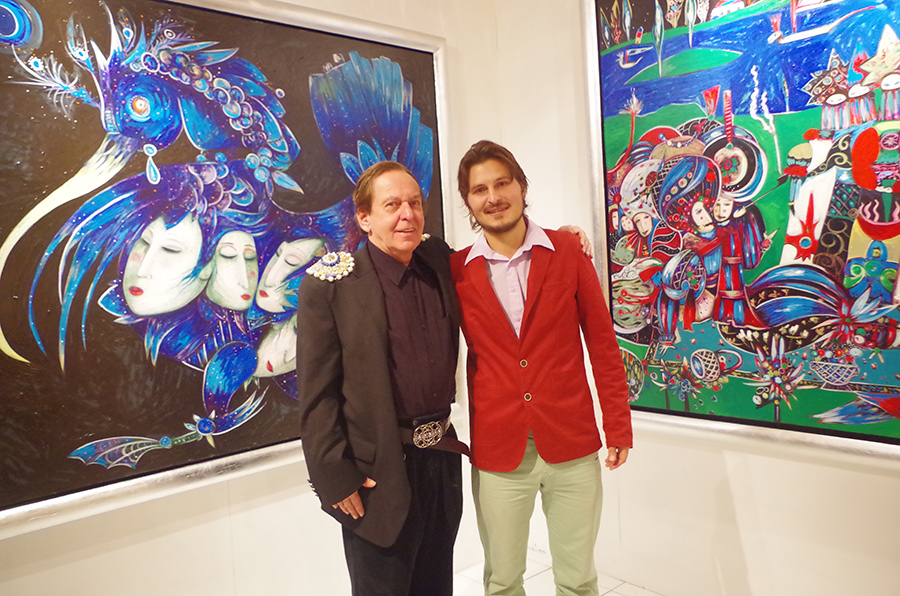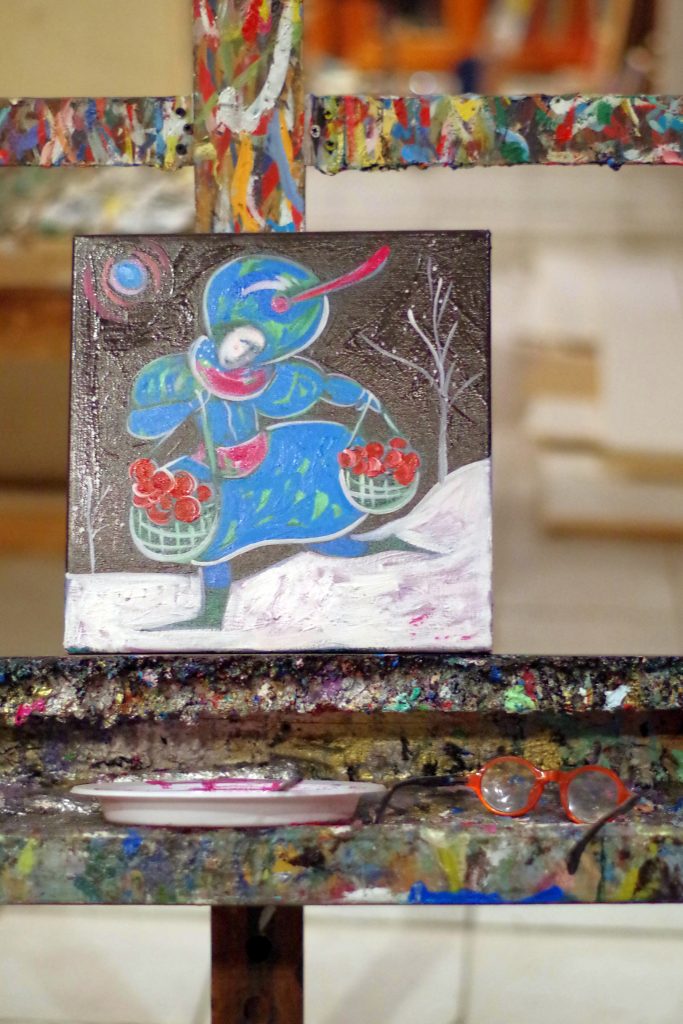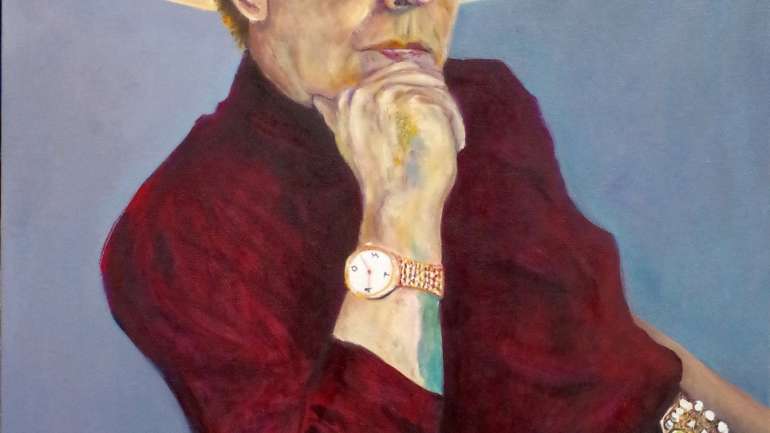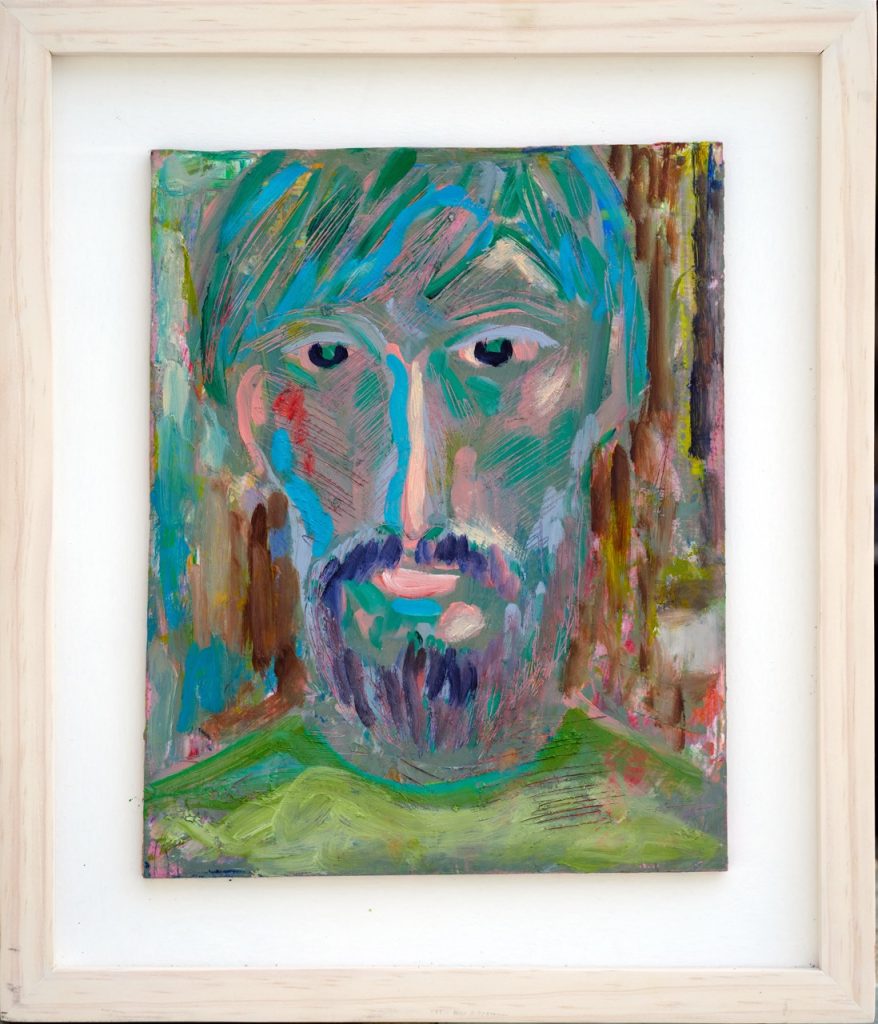
The late Canadian skating icon, Toller Cranston, was the best friend I had in Mexico. We met at the end of 2011, when I visited his gallery in San Miguel de Allende for the first time. Just then, Toller was putting on an exhibition for a younger artist whom he had taken under his wing. The paintings were OK, but the presentation was phenomenal – heavy gold frames, three young men in suits serving drinks, good music, good lighting, and an overall air of utmost professionalism. As a younger artist, I took mental notes of everything. My education with Toller began that moment.
Toller (whom I had never seen before and therefore did not recognize) instantly identified me as an artist and presented himself as the owner of the gallery. Then, one of the young men took me on a tour of the 16 bedrooms of which the property comprised. Every inch of space was filled with paintings, giant lamps, blown glass hearts, painted ostrich eggs, ceramic plates, and a huge variety of other beautiful objects. Some of the closets were so full of coats, shirts, and sweaters that they would not close.
A few days later, I came home to find Toller waiting outside my door. “Oh, hi Andrew,” he said. “Come for breakfast tomorrow. See you then.” Before I could react, he flicked his wrist, made a ninety degree turn, and quickly walked away. “What time?” I yelled after him. He did another dramatic turn-around to face me again. “Nine o’clock,” he said. “Bye.” That meeting lasted about 45 seconds, but was etched into my memory forever.
Every day at 9 AM, Toller invited friends, clients, and staff to gather around his table for breakfast. Always meticulously dressed in brightly colored cashmere sweaters and designer shirts (which he bought for nothing at the local market), he would talk about art, politics, and travel while two very nice Mexican ladies served us food and copious amounts of coffee. Toller inevitably led every discussion by asking constant questions and then interrupting any attempt at an answer in order to tell a story of his own. “I have a big exhibition in London and I have to be there,” he would say. “Is there time for a facelift?” We would laugh and then I’d notice Toller’s nasty cough. “Do you want me to get you some medicine to fix that?” I would ask. “Just write me a huge cheque, that will fix it,” he replied without a moment of hesitation. He was a genious at one-liners.
In many of our early conversations, Toller went out of his way to ensure me that it was possible to live well as an artist, providing evidence of his own extravagant lifestyle as undeniable proof. “Would it depress you if I showed you my 3000 coats?” he asked.
More than once, we went shopping together. He would buy as many beautiful things as he could in the shortest possible amount of time – and he didn’t need any of them. “This is very expensive,” I would point out. “It’s just what I like!” he would immediately counter.
Many of the things he bought were given away to his friends. Toller loved to reward anyone who came to see him with a bracelet, a sweater, or a new coat. Extravagant shopping was a part of his persona, but when he confided to me that it was also the only thing that brought him any pleasure in this life, I was quietly shocked.
After our first or second breakfast, Toller gave me some of his favorite art supplies and my first cashmere sweater. “You have to look successful in order to sell art,” he said. He also gave me art books from his library, encouraged me to borrow art-related DVDs, and even bought me my first really large canvas. “You have to paint bigger to be taken seriously,” he advised. On that canvas, I painted a portrait of Toller, myself and my fiancee eating Ukrainian Borscht in my kitchen. The painting sold almost immediately.
I saw Toller support, morally and financially, all kinds of artists – from street vendors of handmade crafts to talented painters and sculptors. In the past, he mentored several Olympic gold winning figure skaters. During the time I knew him, he invited artists he liked to participate in all-expenses-paid exhibitions from which he took no commissions. He connected artists with important collectors, and sometimes even published books of their work, asking for nothing in return. He said it was always better to give than to receive.
Unfortunately, Toller did not like to be helped. Once, seeing that he was overworked, I suggested that he should take it easy. His reply was “I CAN’T take it easy, I’m intense!” Another time, I told him that I thought he was trying to do too much too fast. He dramatically stopped, turned to me, and announced, “I really liked you 5 seconds ago.” Then we both laughed.
Toller was creative to the core of his being. At his parties, he would serve brightly colored desserts on deep-blue plates lined with rose petals, several miniature lit candles sticking out of every slice of exotic-looking cake. On special occasions, bunches of fresh flowers would not only grace his table but would also protrude in all directions from the massive chandelier (also of his design) hanging overhead. Setting aside all conventions, he was unapologetically creative with his clothes, his choice of words, and even his body language. This unfettered creativity no doubt made Toller difficult for some people to comprehend, but he truly was a wonderful gift to this world, and utterly unlike anyone else.
He was not perfect – at times, he could be rude, mean, and completely illogical. But I believe that literally everything Toller Cranston did during his lifetime was a conscious effort to be remembered and missed afterwards. In that sense, he succeeded on a grand scale. Everybody whose life he touched continues to think and talk about him just as much as when he was alive. His memory will remain in our hearts and minds forever.
Andrew Osta
March 18, 2015
San Miguel de Allende




